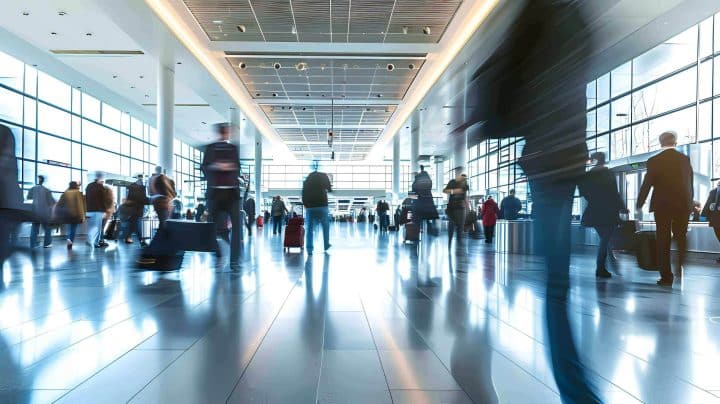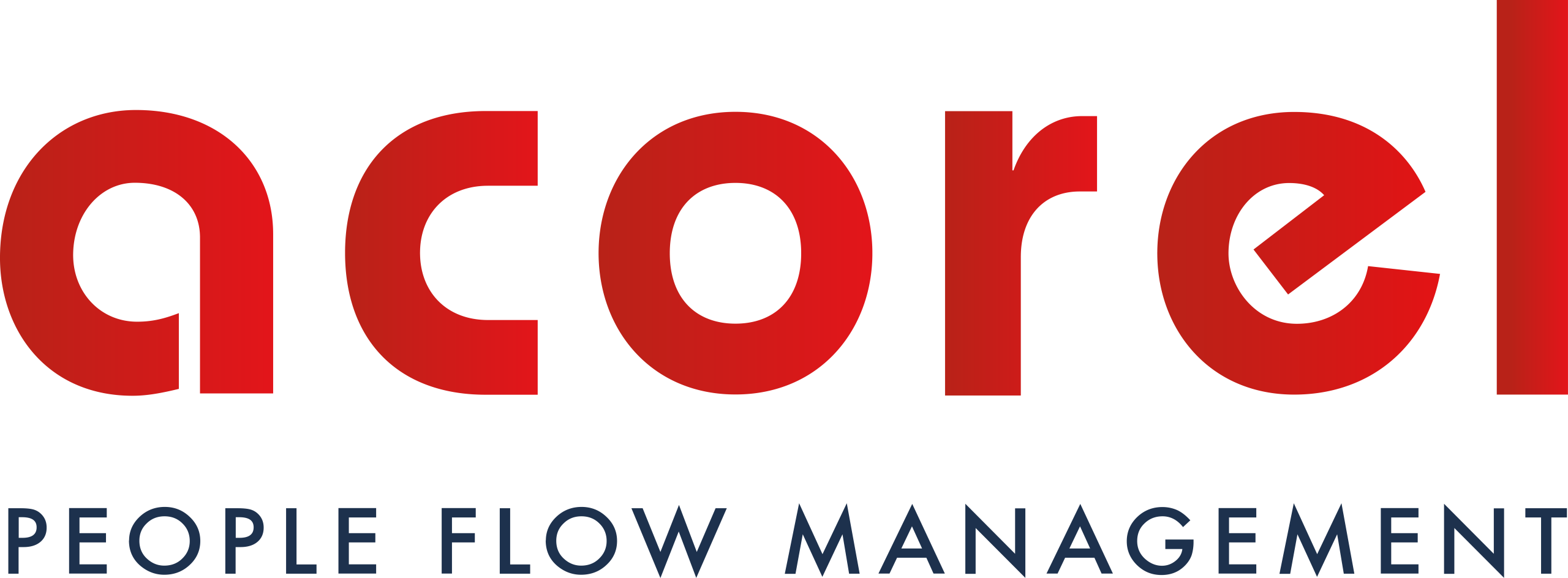The management of passenger flows at airports is essential to guarantee safety, efficiency and passenger satisfaction. With the number of air passengers constantly increasing, airports need to be flexible and adaptable to meet the growing challenges.

The current challenges of airports
Growth of air traffic
AAccording to the International Air Transport Association (IATA), the number of air passengers is set to double by 2037, reaching 8.2 billion a year. This exponential growth places considerable pressure on airport infrastructure.
This overload can lead to frequent delays, saturation of terminals, runways, and aircraft parking areas. The physical expansion of airports is often complicated by spatial, financial, or regulatory constraints. This highlights the need to improve the efficiency of existing infrastructure through air and ground traffic management technologies.
Security and compliance
Increasingly stringent safety measures and regulatory requirements mean that constant adjustments have to be made. Airports must ensure that security procedures are not only robust but also adaptable to new threats. In the face of growing threats from terrorism and cyberattacks, airports must continuously strengthen security measures, both physically and digitally. Security checks are becoming more complex, which can extend wait times for passengers. Moreover, new international regulations require heightened vigilance regarding the transport of goods, passengers, and airport staff, further increasing pressure on human and technical resources.
Passenger experience
Passenger expectations for service and experience are constantly evolving. Airports must provide high-quality services while minimizing wait times and facilitating the passenger journey. Travelers demand fast services, increased comfort, and seamless connectivity. This includes smooth check-in processes, optimized security checks, personalized experiences, improved Wi-Fi connectivity, and high-quality entertainment and dining options. Airports must also adapt their infrastructure to meet the needs of business travelers, offering comfortable workspaces and lounges. This expectation for service is an ongoing challenge that requires continuous innovation to enhance the passenger experience.

Flexibility in passenger flow management
🌐 Technologies and innovations
The integration of advanced technologies, such as real-time queue management systems, mobile apps for passengers, and the use of biometrics for check-in and security control, enhances operational flexibility.
👨💼 Resource management
Dynamic management of human and material resources is essential. This includes training employees for various roles, adjusting work schedules based on traffic peaks, and using mobile vehicles and support equipment.
Installation of an automatic people counting system
Automatic people counting systems play a crucial role in the modern management of passenger flow in airports. They use advanced technologies to monitor and analyze traveler movement, providing valuable data to optimize airport operations.
Types of automatic counting systems
👨💻 Computer vision cameras
These systems use high-resolution cameras and computer vision algorithms to detect and count passengers in real time. They can distinguish individuals in dense environments and provide accurate data on the number of people in a specific area.
🚨 Infrared sensors
Infrared sensors detect temperature changes associated with people passing by. They are often installed at entrances and exits to count passengers entering and leaving a given area.
📱 RFID systems
Systems using RFID technology count passengers through tags or wearable devices. These systems are particularly useful for tracking passenger flow through various control points.
RFID readers can also be used in the management of sanitary blocks.
Indeed, Acorel offers a turnkey solution, from counting sensors to RFID readers, along with the server hosting the database and the application that allows for real-time and delayed counting data notifications and consultation, as well as the generation of specific reports.
Advantages of automatic counting systems
🎯 Accuracy and reliability
Automatic counting systems offer high accuracy and reliability, far surpassing manual methods. They enable real-time tracking of passengers, reducing margins of error and improving decision-making.
😊 Improvement of passenger experience
Wait times can be reduced through better management of queues and control points. Passengers benefit from a smoother and more pleasant experience, increasing their overall satisfaction.
📈 Prediction of traffic peaks
Automatic counting systems allow for the prediction of traffic peaks and the adjustment of operations accordingly. They provide historical and real-time data that help anticipate and manage periods of high traffic.
In conclusion, flexibility and adaptability are essential pillars for managing passenger flow in airports.
Faced with growing challenges, these qualities not only help maintain operational efficiency and security but also improve the passenger experience. By investing in modular infrastructures, innovative technologies, and dynamic resource management, airports can better meet the current and future needs of travelers.
The implementation of automatic people counting systems is an indispensable tool for modern airport management. By offering superior accuracy and reliability, they allow for the optimization of resources, improvement of passenger experience, and efficient management of passenger flow. Investing in these technologies is essential for airports seeking to address the growing challenges of air traffic and provide quality service in an ever-evolving environment.
A flexible and adaptable approach is key to turning challenges into opportunities and ensuring high-quality service in a constantly changing airport environment.
For more information, click here
